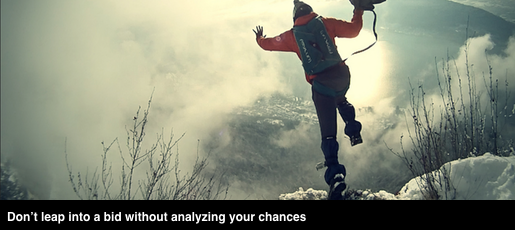This and future posts examine critical points in the bid proposal lifecycle—opportunities to exert outsize influence on your chance of success.
The bid/no-bid decision is one of those. This point is a bit of an outlier, since it’s about whether to bid, rather than how to manage the bid effort. Still, by focusing on two decision variables, you can make a huge difference in wins.
Those variables are speed and quality.
Faster is better
We see companies routinely take two weeks or more to decide whether to bid on opportunities with six- or eight-week submission deadlines. Deciding faster has positive consequences, whichever way the decision goes. Here’s why:
- If you decide to bid, you’ve gained a big chunk of the (typical four to six week) window for preparing a winning proposal
- If you decide not to bid, you’ve saved time that can be invested in more promising opportunities or on other business priorities
High quality decisions maximize return on resources
Bid/no-bid decisions are intended to predict the likelihood of winning. Bidders who make better decisions deploy their proposal development resources on more promising opportunities.
A process for making high quality decisions also avoids internal divisions and lack of commitment. In the absence of such a process, there’s often no shared definition of success potential. Under these conditions, company leaders frequently push to bid on most or all opportunities despite resource constraints.
A clear process helps align stakeholders behind bid/no bid decisions, results in better decisions, and guards against weak proposals symptomatic of bid writer burnout.
What to do
Here’s how to start making faster, higher quality decisions:
- Use the arguments above to get buy-in for a repeatable process that considers specific questions about your knowledge of the prospect and the project, likely competition and internal factors as part of your decision.
- Involve key stakeholders and structure the process to be as transparent as possible.
- Prepare one-page summary of each bid opportunity, so participants don’t have to wade through the entire RFP. We’ll devote a future post to bid decision summaries.
- Download the Complex2Clear Bid/No-Bid Decision Tool and adapt it for your company’s use.
Learn over time
Document your bid/no-bid decisions and track bid outcomes against those scores. This will improve your ability to predict success and provide information to help fine-tune your decision criteria and process.
Photo credit


